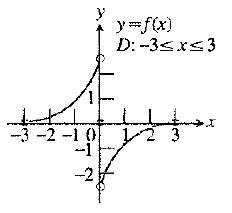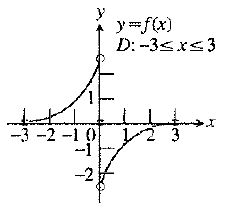
Concept explainers
(a)
The domain points of the given function appear to be differentiable.
(a)
Answer to Problem 7E
The required domain points of the given function appears to be differentiable is
Explanation of Solution
Given information:
The given function is:
And, the domain points is

The given function is:
Since, from the figure it is seen that the function
Also, from the figure it is seen that the function
Thus, the function
Hence, the required domain of the function appears to be differentiable is
(b)
The domain points of the given function appear to be continuous but not differentiable.
(b)
Answer to Problem 7E
The required domain of the given function appears to be continuous but not differentiable is none.
Explanation of Solution
Given information:
The given function is:
And, the domain points is

The given function is:
From the results (a) it is seen that the function
So, the given function is continuous on
Thus, there are no points where it is continuous but not differentiable.
Hence, the required domain of the function whether the function appears to be continuous but not differentiable is none.
(c)
The domain of the given function appear neither continuous nor differentiable.
(c)
Answer to Problem 7E
The required domain of the given function appears to be neither continuous nor differentiable at
Explanation of Solution
Given information:
The given function is:
And, the domain points is

The given function is:
From the results (a) the function has a discontinuity at
Hence, at
Chapter 3 Solutions
Calculus 2012 Student Edition (by Finney/Demana/Waits/Kennedy)
Additional Math Textbook Solutions
Calculus: Early Transcendentals (2nd Edition)
Thomas' Calculus: Early Transcendentals (14th Edition)
Precalculus: Concepts Through Functions, A Unit Circle Approach to Trigonometry (4th Edition)
Single Variable Calculus: Early Transcendentals (2nd Edition) - Standalone book
Precalculus Enhanced with Graphing Utilities (7th Edition)
University Calculus: Early Transcendentals (4th Edition)
 Calculus: Early TranscendentalsCalculusISBN:9781285741550Author:James StewartPublisher:Cengage Learning
Calculus: Early TranscendentalsCalculusISBN:9781285741550Author:James StewartPublisher:Cengage Learning Thomas' Calculus (14th Edition)CalculusISBN:9780134438986Author:Joel R. Hass, Christopher E. Heil, Maurice D. WeirPublisher:PEARSON
Thomas' Calculus (14th Edition)CalculusISBN:9780134438986Author:Joel R. Hass, Christopher E. Heil, Maurice D. WeirPublisher:PEARSON Calculus: Early Transcendentals (3rd Edition)CalculusISBN:9780134763644Author:William L. Briggs, Lyle Cochran, Bernard Gillett, Eric SchulzPublisher:PEARSON
Calculus: Early Transcendentals (3rd Edition)CalculusISBN:9780134763644Author:William L. Briggs, Lyle Cochran, Bernard Gillett, Eric SchulzPublisher:PEARSON Calculus: Early TranscendentalsCalculusISBN:9781319050740Author:Jon Rogawski, Colin Adams, Robert FranzosaPublisher:W. H. Freeman
Calculus: Early TranscendentalsCalculusISBN:9781319050740Author:Jon Rogawski, Colin Adams, Robert FranzosaPublisher:W. H. Freeman
 Calculus: Early Transcendental FunctionsCalculusISBN:9781337552516Author:Ron Larson, Bruce H. EdwardsPublisher:Cengage Learning
Calculus: Early Transcendental FunctionsCalculusISBN:9781337552516Author:Ron Larson, Bruce H. EdwardsPublisher:Cengage Learning





